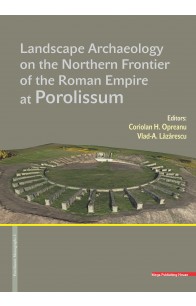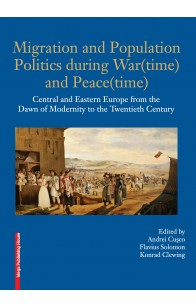Rezultate căutare pentru 'Andrei Tudor Moldovan'
În anul 2011 s-au împlinit 30 de ani de la încheierea săpăturilor arheologice la castrul şi aşezarea civilă de la Slăveni/Dolj (baie, templu, locuinţe etc.). Din motive obiective şi subiective monografia castrului şi aşezării nu a fost publicată. Decesul profesorului D. Tudor, apoi a altui membru a colectivului, profesorul O. Toporu, au fost cauzele principale ale acestei situaţii. S-au mai adăugat apoi reorientarea cercetărilor prof. G. Popilian spre alte domenii şi în fine, starea precară de sănătate a ultimului.
În prezent, la iniţiativa prof. G. Popilian (şi sub directa sa conducere), doi colaboratori la cercetările arheologice din sudul Daciei, dr. D. Bondoc şi prof. dr. N. Gudea, s-au decis să îndeplinească dezideratul menţionat mai sus şi să elaboreze o monografie a castrului de la Slăveni şi a aşezării lui civile. Monografia urmează un plan clasic, adoptat mai demult în arheologia provincială romană, plan care acoperă toate problemele pe care le ridică cercetarea unui obiectiv atât de complex (la ora aceasta cel mai complex din Dacia de sud). În contextul în care în România monografia arheologică nu are încă un rol decisiv în rezolvarea problemelor unei epoci istorice (oricare ar fi ea), elaborarea monografiei despre Slăveni are scopul de a întregi cunoştinţele despre epoca romană în Dacia de sud (Oştenia mai ales), dar şi pentru întreaga Dacie. Monografia va pune la dispoziţia cercetătorilor (dar şi studenţilor) de pretutindeni date despre un castru ale cărui începuturi datează dinainte de înfiinţarea Daciei (epoca Moesiei Inferior 101–106 şi se încheie odată cu provincia de sud (275)).
Scopul monografiei este nu atât rezolvarea problemelor de istorie militară (care ocupă desigur un loc important), cât punerea în lumină a elementelor vieţii soldatului roman, calitatea vieţii lui, legăturile cu mediul civil, forţa romanizatoare pe care a avut-o soldatul roman în context provincial dacic. Monografia castrului de la Slăveni încearcă să demonstreze că Dacia a aparţinut tipului occidental de viaţă romană, că fortificaţia a coagulat în jurul lui o bună parte din factorii procesului de romanizare. Toate acestea se vor reflecta atât în contextul scris a monografiei, cât şi, mai ales, în partea de prezentare a culturii materiale (prin comparaţie) ilustrată în catalog.
„The frontiers of the Roman Empire, over 5000 km long, stretch from the Atlantic coast of Scotland, along the Rhine and the Danube, also enclose the Banat region and Transylvania, then going down along the Oriental Carpathians to the Black Sea; from the southern coast of the Black Sea they continue towards the Near East until the Red Sea; then, in North Africa, they line the edge of the Sahara desert until the Atlantic coast of Morocco. Over this entire area, visible traces of fortifications, roads and settlements are still preserved, but numerous monuments still lay hidden underneath the earth. Despite the fact that the Roman frontiers crossed regions with different relief and climate, they constitute a whole in that they were designed to protect Roman territories. The research of these monuments and the preservation policy regarding them was and is unequal in the various presentday states on whose territory traces of the Roman frontier are to be found. Consequently, in the ‘80s of the 20th century, the idea of globally protecting the Roman frontiers, viewed as a unitary monument, was met. In 1987, Hadrian’s Wall in United Kingdom was declared a UNESCO monument. It was followed in 2005 by the German-Raetian sector, on which occasion the UNESCO committee decided to set up the ‘Frontiers of the Roman Empire’ site. (...)
This project through its complexity generated an interdisciplinary approach of the proposed subject stimulating such future attempts in the archaeological research field. By using the latest technical methods of non-destructive investigation the project did not damage the stratigraphy of the archaeological site obtaining instead a high amount of data otherwise time consuming judging from the archaeological excavations perspective contributing also to the preservation of the cultural heritage.” - Introduction
"This volume with the somewhat ambitious title Migration and Population Politics during War(time) and Peace(time): Central and Eastern Europe from the Dawn of Modernity to the Twentieth Century reflects and builds upon the current debates in the thriving field of migration studies and migration history. It aims to provide an innovative perspective on the regional East European dimension of this phenomenon by discussing the specific migration processes in the area from early modern times to the present."(Excerpt from "Introduction")






